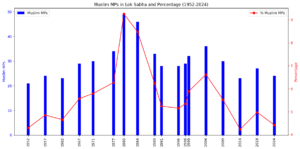In recent years, the influence of right-wing media in India has become increasingly pronounced, sparking debates about its role in shaping public opinion and its impact on the democratic fabric of the nation. Right-wing media outlets, including websites like Swarajya, OpIndia, TFI Post, Satyavijayi, The True Picture, MyNation, and IndiaFacts, have been criticized for their approach to journalism, which many argue undermines the principles of a democratic society. This article delves into the ways in which these media entities contribute to the degradation of Indian democracy, with specific examples and references to support these claims.
The Rise of Right-Wing Media in India
The ascendancy of right-wing media in India coincides with the political rise of the Bharatiya Janata Party (BJP) and its leader, Narendra Modi. Since Modi’s election as Prime Minister in 2014, there has been a noticeable shift in the media landscape, with several outlets adopting a more nationalist and conservative stance. This shift is not merely coincidental; it reflects a broader ideological alignment with the ruling party’s policies and rhetoric.
Media Outlets at the Forefront
- Swarajya: A digital publication that often champions the policies and perspectives of the BJP, Swarajya has been accused of presenting a one-sided view of political and social issues. Critics argue that it often overlooks or underrepresents opposing viewpoints. (Bhat and Chadha, 2020)
- OpIndia: Known for its overtly pro-BJP stance, OpIndia has been accused of promoting misinformation and biased reporting. The website frequently targets political opponents and critics of the government, often using sensationalist headlines and unverified information. Critics argue that OpIndia’s content often lacks journalistic integrity and contributes to a polarized and misinformed public.
- TFI Post: This outlet is known for its strong nationalist tone and support for the BJP. TFI Post has been criticized for its aggressive and sometimes inflammatory rhetoric, which can deepen societal divisions.
- MyNation: A digital news platform that often aligns with the BJP’s viewpoints, MyNation has faced accusations of biased reporting and a lack of critical analysis of government policies. It tends to highlight stories that reinforce nationalist and conservative values.
- IndiaFacts: Focused on Indian history and culture from a nationalist perspective, IndiaFacts has been criticized for promoting a revisionist history that aligns with right-wing ideologies. Its content often challenges established historical narratives in ways that support the BJP’s cultural agenda.
- Sudarshan News: Their channel/website is known for boldly criticizing minorities, particularly Muslims, using controversial terms like “Pariksha Jihad.” They openly endorse the Hindutva ideology and are unapologetic about it.
Tactics and Strategies
Right-wing media outlets employ various tactics to shape public opinion and influence the democratic process. There are many but below are a few examples:
- Selective Reporting: By selectively covering news that aligns with their ideological stance, right-wing media outlets create a skewed perception of reality. For instance, issues that put the government in a positive light are given extensive coverage, while stories that could potentially harm its image are downplayed or ignored.
- Discrediting Dissent: A common strategy is to discredit and delegitimize critics of the government. This is often done through ad hominem attacks, character assassination, and questioning the patriotism of dissenters. For example, activists, journalists, and opposition politicians are frequently labeled as “anti-national” or “urban Naxals” on platforms like Republic TV and OpIndia.
- Spreading Misinformation: Right-wing media has been implicated in the spread of misinformation and fake news. This includes sharing unverified information, manipulating facts, and creating misleading narratives. Such practices not only misinform the public but also contribute to societal divisions and unrest.
- Polarization: By emphasizing divisive issues such as religion, caste, and nationalism, right-wing media outlets exacerbate social tensions. The coverage often pits different communities against each other, fostering an environment of mistrust and hostility. This polarization undermines the democratic principle of unity in diversity.
Impact on Democracy
The actions of right-wing media outlets have several detrimental effects on Indian democracy:
- Erosion of Free Press: A vibrant democracy relies on a free and independent press that holds power to account. When media outlets align themselves too closely with the government, they compromise their ability to perform this crucial role. The blurring of lines between journalism and propaganda weakens the checks and balances necessary for a healthy democracy.
- Informed Citizenry: Democracy thrives on an informed electorate capable of making decisions based on accurate and comprehensive information. The spread of misinformation and biased reporting by right-wing media hampers this process, leading to a misinformed and polarized populace. This can have serious implications for electoral outcomes and policy support.
- Undermining Institutions: Right-wing media often attacks institutions that are essential to democracy, such as the judiciary, election commission, and independent regulatory bodies. By questioning the legitimacy and integrity of these institutions, media outlets contribute to a decline in public trust and confidence in the democratic system.
- Suppressing Dissent: A healthy democracy encourages diverse opinions and robust debate. However, the vilification of dissenting voices by right-wing media creates an atmosphere of fear and self-censorship. This stifles open discussion and critical thinking, which are vital for the evolution and progress of democratic societies.
Case Studies
- The JNU Controversy: In 2016, students at Jawaharlal Nehru University (JNU) were accused of sedition for allegedly chanting anti-national slogans. Right-wing media, particularly Republic TV and Times Now, played a significant role in shaping public perception by portraying the students as traitors. The coverage was later criticized for being one-sided and lacking factual accuracy, highlighting the media’s role in escalating the controversy.
- The Farmer Protests: The year-long farmer protests against three farm laws enacted by the Modi government saw extensive coverage from various media outlets. Right-wing media channels often depicted the protesters as misled or influenced by external forces, while downplaying their legitimate concerns. This narrative was challenged by other media and independent fact-checkers, but the initial bias influenced public opinion and policy debates.
- Handling of COVID-19 Pandemic: During the COVID-19 pandemic, right-wing media outlets were criticized for their coverage of the government’s response. Positive stories about government initiatives were amplified, while criticism regarding mishandling and lack of preparedness was minimized. This selective reporting impacted the public’s understanding of the crisis and the effectiveness of the response.
The role of right-wing media in India raises significant concerns about the health of the country’s democracy. By prioritizing partisan interests over journalistic integrity, these outlets contribute to misinformation, polarization, and the erosion of democratic institutions. While media in a democracy should be free to express diverse viewpoints, it must also adhere to principles of fairness, accuracy, and accountability. The current trajectory of right-wing media in India highlights the urgent need for media reform and a recommitment to the democratic ideals of truth and justice.
References
Bhat, P., & Chadha, K. (2020). Anti-media populism: Expressions of media distrust by right-wing media in India. Journal of International and Intercultural Communication, 13(2), 166–182
OpIndia. Retrieved from https://www.opindia.com/
Swarajya. Retrieved from https://swarajyamag.com/
TFI Post. Retrieved from https://tfipost.com/
MyNation. Retrieved from https://www.mynation.com/



